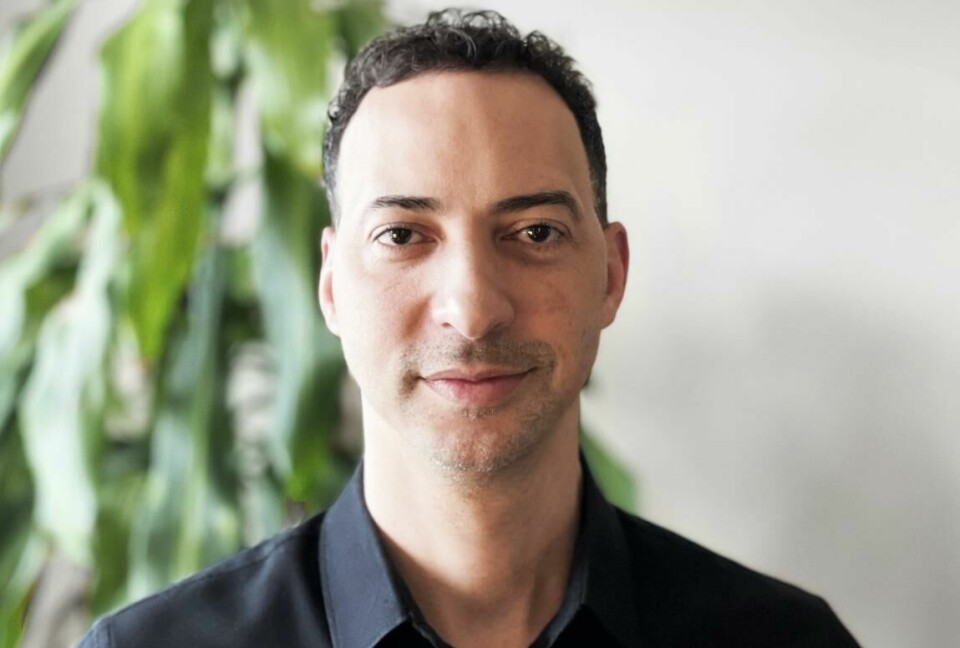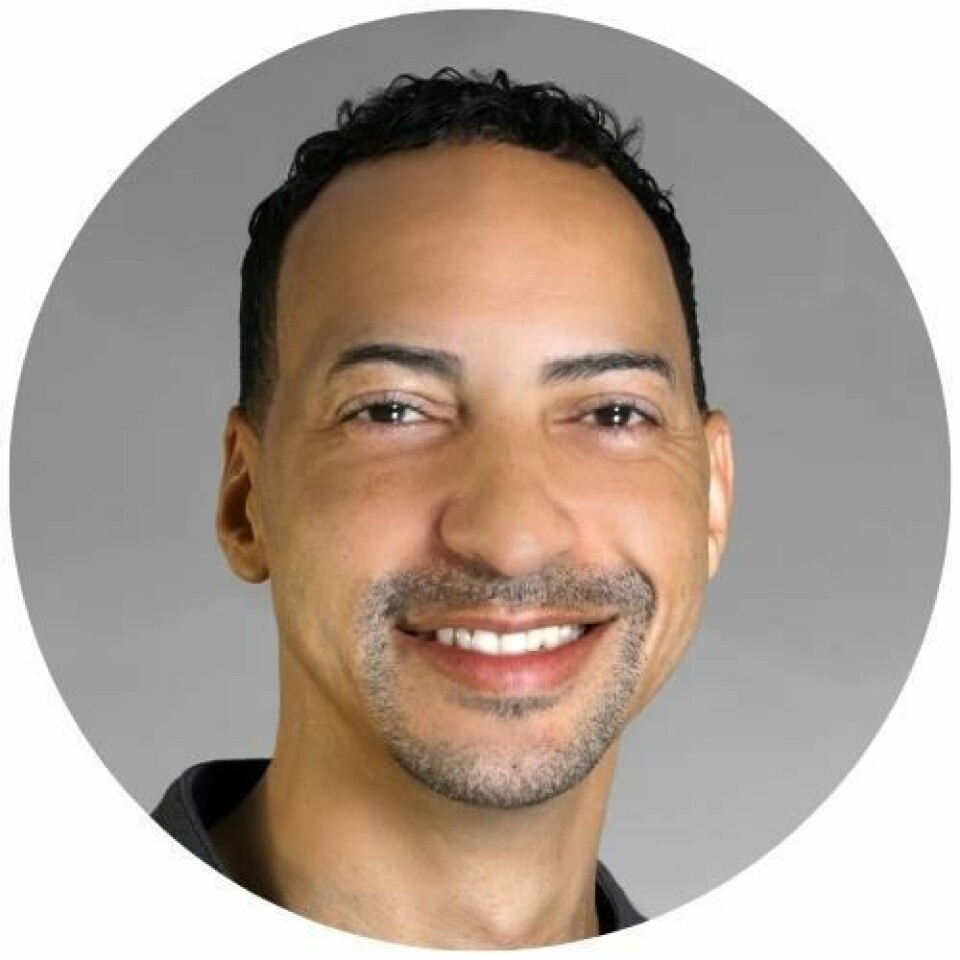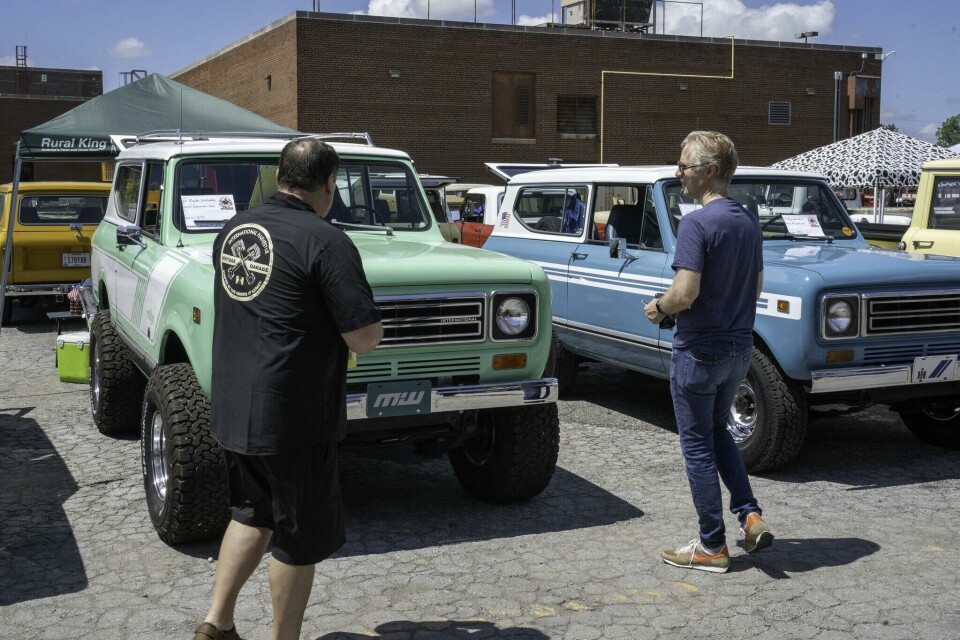
Exclusive: Chris Benjamin on taking the reins at Scout
The former VP of interior design at Stellantis sat down with North American Correspondent Laura Burstein to discuss building a new team and reimagining a storied brand
Chris Benjamin has been announced as the new chief design officer for Scout Motors, the resurrected American off-road brand established by Volkswagen Group last year. Headquartered in the US, Scout has promised an all-electric truck and SUV by the end of 2026. We caught up with Benjamin in Silicon Valley the day after the announcement to learn more.
Laura Burstein: You seem perfectly positioned to lead the Scout design team, with your most recent experience at Stellantis working on brands such as Jeep and Ram. What excites you the most about this new role?
Chris Benjamin: For me, it’s taking ownership of the whole look and feel of a brand and how you incorporate that into the design from the beginning. That’s an opportunity that doesn’t come along very often. I did interiors for the last ten years at Stellantis, and in the six years at Volvo I did mostly exterior design. Designworks was a mix of things, including third-party stuff, and at Mercedes I did a pretty strong mix of interior and exterior. So what excites me is this combination of all of those design elements coming together to create something cool.

LB: Scout seems to be in this best-of-both-worlds situation where it’s a new brand with a startup mentality, but owned by VW Group. Was this part of the appeal?
CB: Yes, completely. I like stability; I’m not an entrepreneurial type. Then, you think about German excellence in engineering, the technical backbone and support, and colleagues that have designed some of the coolest cars on the planet. So it was the whole package that attracted me. Startup life, being in the US, being able to be in from the ground up, but with also the backing of the well-to-do uncle who you know has got your back and is going to help you succeed.
LB: What does the Scout brand mean to you and how will that translate to the design?
CB: Scout has to be iconic. The first view from the exterior has to be something that strikes you. It has to give people the nostalgia from the Scouts that were on the roads from the ‘60s to the ‘80s, and it has to mean a lot to different groups of people. But it will also have the surprise and delight of, it’s an electric car; it will have cool technology and things people will want and hope for. And yes, Scout has a history as an off-road brand, but people aren’t just going off road with this car. They’re going to go to the store, they’re going to take their kids to school, they’re going to do normal things. It’s about the balance of the perception of ruggedness and modern conveniences and how you mesh all of that together.
You can look at the original Scout and find elements you’d want to re-create
LB: We’ve seen some early sketches and renderings of what Scout might look like. How much of that is set in stone and how much freedom will you have to shape what’s to come? Do you have a package, or is that still being developed?
CB: I don’t get the impression that anything is set in stone. The platform and package are pretty well developed, and thankfully the proportions are amazing, so there’s really nothing to change or alter there. But when it comes to design, nothing is off the table. I’m getting familiar with the team and the work, and we’ll approach any changes we do carefully. I come in with fresh eyes but also thinking critically, because you get one shot and it has to be done right.

LB: Have any specific brand pillars or design elements been defined?
CB: We haven’t defined those pillars yet, but you can look at the original Scout and find elements you’d want to re-create. Although at the same time, if you just followed the formula, you might end up with a Bronco, because both had a similar flair to them. So we won’t do that. But making it reminiscent of what people recognised from that time period while doing something that is unique from what’s on the road today.
LB: There always seems to be great debate about going retro versus creating something completely new when bringing back a heritage brand or nameplate. Where will Scout fall on that spectrum?
CB: My design aesthetic never wants me to do anything retro. To me, retro is when you take all of the elements that were there on the original and you just re-imagine the exact same elements. And I think getting caught up in every single detail and trying to make that the same is a mistake. But there is a difference between that and creating something that is iconic but still familiar.
You always start with people and then make choices from there
LB: Can you give me an example of an existing vehicle you think does a good job looking familiar but not retro?
CB: Today’s Dodge Challenger. Okay, a lot of people call it retro, and it is in a way making a similar statement to the original — especially if you look at the Daytona concept car. But for people who don’t know the original, they just look at it and go wow, that’s a cool car. And that’s what you have to do. You have to think about the people who might not know the original and create something that makes a statement as a standalone product.
LB: We see a trend now with studios shifting to an inside-out design approach, starting first with the user experience and interior. Do you think your previous role as vice president of interior design pre-conditioned you to think this way and put you ahead of the curve?

CB: Yes and no, because I’ve always felt that you design a car from the inside out, and that’s because you start with the people. Obviously if your mission is to do a sketch from an exterior design statement, ergonomics aside, of course you make compromises to the occupant package, but you always start with people and then make choices from there.
I think about getting in a car, opening the door for the first time, getting a sense of what it smells like, sitting inside, how easy is it to get in, and then when you start your connection to the car for the day, what is that experience? And that’s where my mind goes, to the holistic feeling of what you do with a brand and how you connect with your customers. You want to make sure that is cohesive and consistent, from the user app to the UX inside the vehicle, making sure all of that has a oneness that feels aligned and connected.
LB: Where are you in the process of building your team and what will that look like?
CB: We’re building the team from the ground-up. There’s only one other design team member in place right now. We actually put some of the design positions out online this week and I’ve been getting a lot of texts and calls and emails from people.
When you find people who are multi-talented, you don’t need as many
I don’t have a number for the total team in mind, but we will be very efficient. I don’t expect the number to exceed 40 with everything like interior, exterior, the modeling side, colour and materials, and digital modeling. We’ve seen examples of companies that get this huge infusion of cash and they go crazy and hire all of these people, and then have to lay people off after the fact. That’s definitely not something I want to do. So that will also dictate the types of designers I get.
LB: How so?
CB: For me, someone needs to be a jack-of-all trades. And that’s specifically why in some of the job postings, it’s nondescript. Interior or exterior doesn’t matter, because I expect a designer to be able to come in and do both, and have the ability to do 3D as well. When you find people who are multi-talented, you don’t need as many.
LB: Right now the design headquarters will be based in the Detroit area. Are there any plans to expand elsewhere, like California?
CB: There are tons of talented people in California and tons in the Detroit area as well. If I think about the type of talent I need for a design team, if you are a startup but you have to quickly go to production, you need people who have done that. A lot of California studios aren’t production-based — and there’s nothing wrong with that — it’s just that different skill sets exist in different places. It doesn’t mean we won’t have another facility in California, but we aren’t there yet.
LB: Anything else that’s on your mind as you start this new journey, or on design in general?
CB: There are two kinds of designers, those who want to create art and those who want to create with a more technical base. You can create a work of art at its core, but at the end of the day if you think about a completely normal person who just wants to go and buy a car, they aren’t necessarily looking for a piece of art, they are looking for something that has the features they want, something they feel comfortable in when they sit in it.
So the art part of it is what we as designers use to create that emotional bond between the customers and the vehicle. That said, I don’t expect to come in and know all of the answers and just dictate to the team, but rather I hope to be inspired by them as well.






